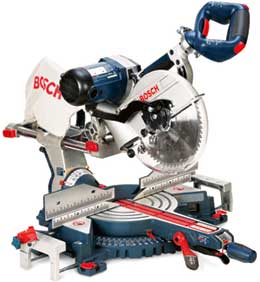
My compound miter saw has been a workhorse in my shop for many, many years. Recently, the start of the cut face is rough and can be 1/32″ deep plus slightly off vertical; partway through the cut it reverts to a smooth full cut. Everything appears tight. After many years of hard use, could it be play in the shaft or perhaps bearings going bad? What is the best method to reverse this condition – if any? – Robert French
Tim Inman: Something is loose or wearing out! My best guess would be the motor bearings have seen their better days. End play in the motor shaft will also cause this type of complaint – which is also a bearing problem. Sometimes there is an adjustment in the motor/bearings to compensate for end play in higher end tools which use tapered roller bearings instead of simple ball bearings. Might be time for a memorial service and a trip to the tool store….
Al Pierga: TV crime dramas use evidence to solve mysteries. Just the same, authorized service professionals seeing a miter saw issue first-hand is often the best way to resolve issues. But here are a few things to try or think about prior to your visit.
Rule out the blade – Thin kerf blades, depending how thin they are, can be unstable, especially in bevel conditions. Try a thicker kerf blade and see what happens.
Tool wear-and-tear – with time and heavy-duty cycles, blade shafts or bearings can fall out of tolerance causing blade “wobble” effect during load transitions – as the blade penetrates the work piece and the cut path increases or decreases. Blades usually stabilize when a steady load is achieved. Poor quality blades (bad tooth grind, clogged blade tips, missing tips, bent tips, etc) can accelerate this degeneration.
Shock to power train/gearbox – usually an abrupt stall, jam of the tool in the material, or a kickback where the blade binds and ejects form the work piece violently. This creates excessive loads in the gearbox causing damage to gears, bearings, or their mounting/supporting features. The visible effect can be “wobble,” again, plus “noise,” typically similar to tumbling marbles in the gearbox, or vibration in the handle.
(Al Pierga is the engineering manager for miter saws at Bosch Power Tools and Accessories.)





